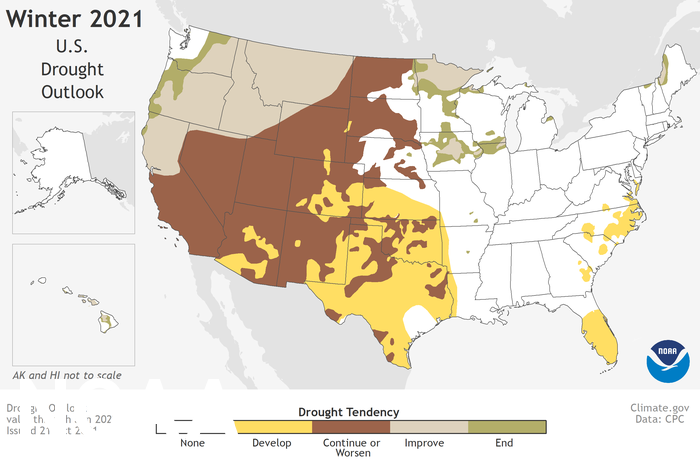The National Oceanic and Atmospheric Administration Climate Prediction Center (NOAA) has released its Winter Outlook for 2021-2022, and it could be a wet and warm one.

La Niña conditions are present in the equatorial Pacific Ocean.
For southeast Wisconsin, we have a higher chance of seeing slightly warmer than average temperatures and a higher chance for above average rainfall from December to February.
To put this into perspective, here's a look at at a graphic of the average temperatures in Milwaukee from December to February.

Here is a graphic showing the average rainfall and snowfall for Milwaukee from December to February.

During La Niña conditions, east-to-west Trade Winds are stronger, pushing warmer water west and upwelling cold water off the coast of South America.
The upwelling of colder water in the eastern Pacific Ocean pushes the jet stream farther north and changes its pattern across the continental United States. This pattern change usually keeps temperatures warmer in the southern states and colder in the northern Rockies and leads to wetter winters in the Great Lakes and Pacific Northwest.
Here's a look at what the Climate Prediction Center has issued for temperature and precipitation chances from December to February

Drought conditions are forecasted to improve in many locations across the Pacific Northwest but are forecasted to worsen through the Rockies and farther south.



